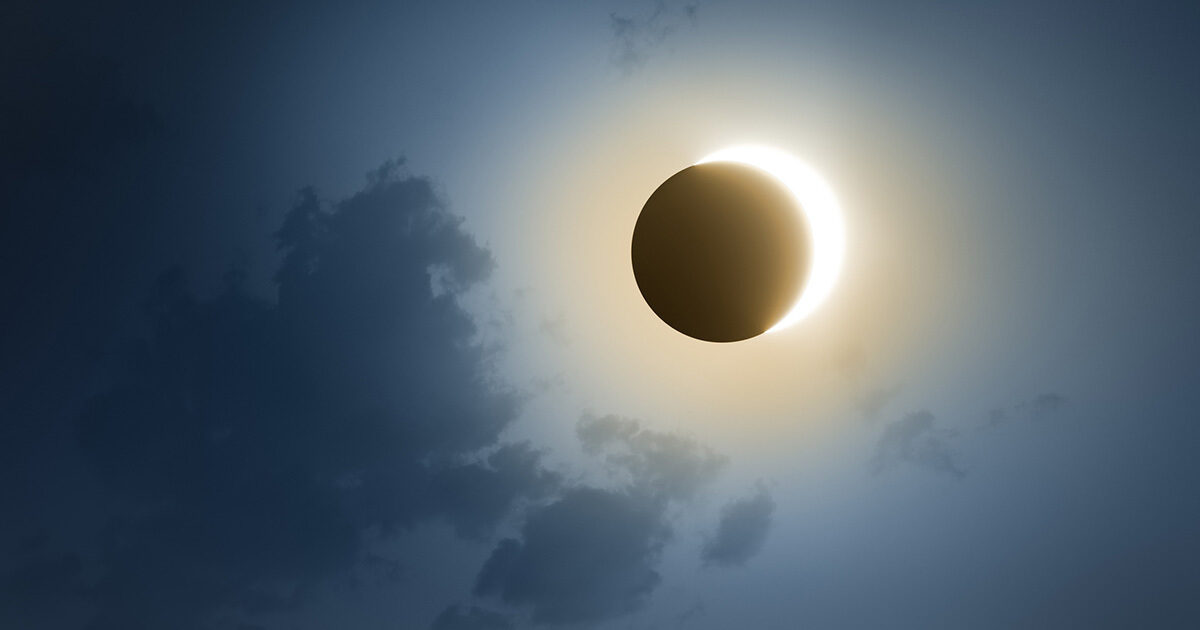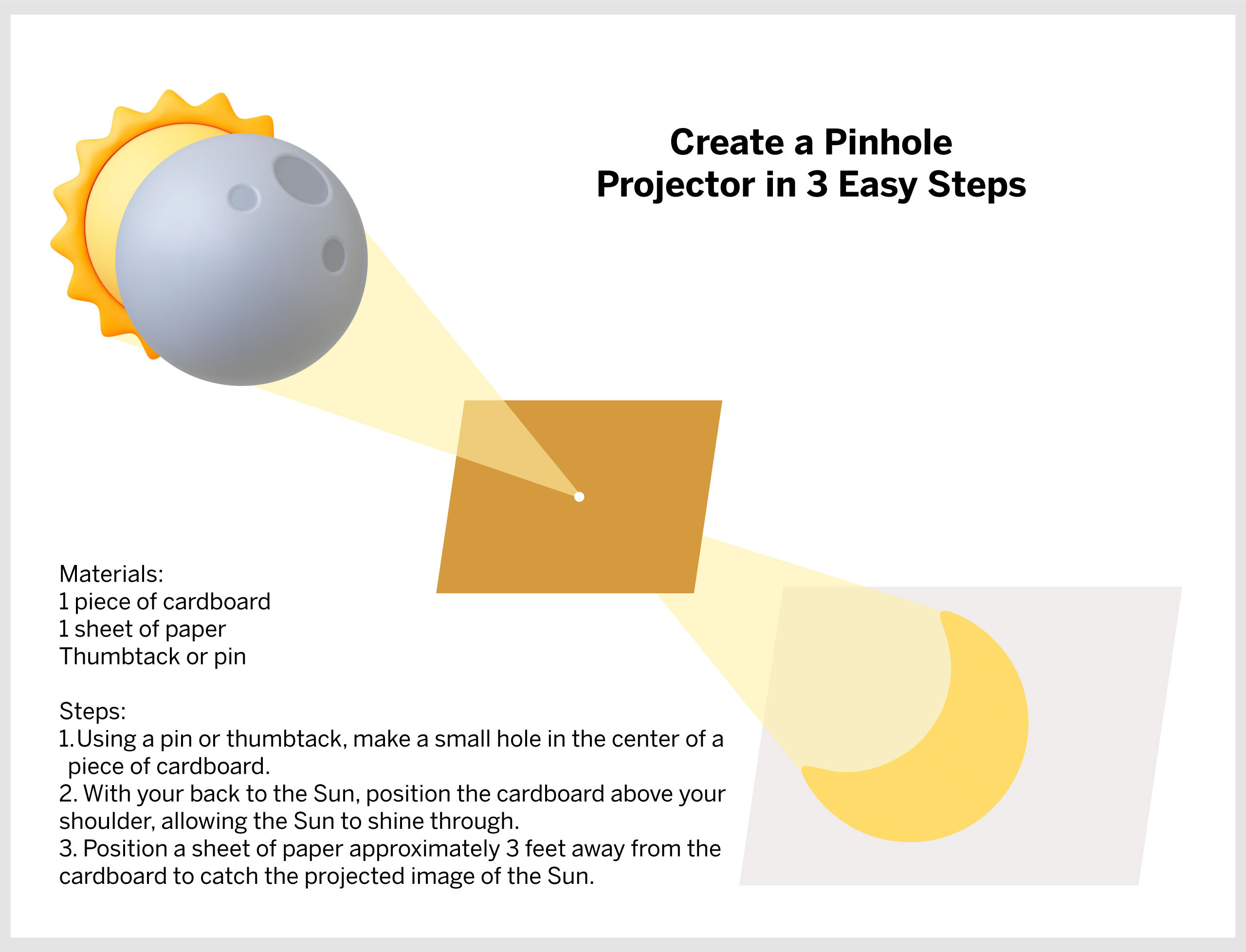Keeping an Eye on Your Vision During the Solar Eclipse
UT Health Austin ophthalmologist shares insights into the importance of protecting your eyes during a solar eclipse
Reviewed by: Eileen Bowden, MD
Written by: Kaylee Fang

Mark your calendar! On Saturday, October 14, 2023, an annular solar eclipse will begin in Oregon at 11:13 a.m. (CDT) and end in Texas at 12:03 p.m. (CDT) with maximum annularity visible to the greater Austin area at approximately 11:54 a.m. (CDT). Following that, on Monday, April 8, 2024, a total solar eclipse will be visible to the greater Austin area from 12:17 p.m. (CDT) to 2:58 p.m. (CDT) with maximum totality occurring at 1:37 p.m. (CDT) as it crosses from Texas to Maine.
“Make sure to prioritize your eye health before observing any solar eclipse,” advises Eileen Bowden, MD, an ophthalmologist in UT Health Austin’s Mitchel and Shannon Wong Eye Institute. “Without proper precautions in place, you can cause significant harm to your vision.”
An Overview of Solar Eclipses
A solar eclipse is a captivating astronomical event that occurs when the Moon moves between the Earth and the Sun. The Moon causes the Sun’s light to be blocked from reaching Earth, casting a shadow. In an annular solar eclipse, the Moon appears smaller than the Sun, creating a stunning “ring of fire” effect as the Sun’s outer edges remain visible around the Moon. During a total solar eclipse, the Moon completely blocks the Sun, revealing the Sun’s outer atmosphere, known as the solar corona, which emits a mesmerizing glow. A partial solar eclipse occurs when the Moon only blocks part of the Sun.
Solar eclipses typically occur anywhere from 2 to 5 times each year. However, their visibility varies based on geographical location. Total solar eclipses are extremely rare and may occur at a specific location only once every few hundred years. The frequency of solar eclipses depends on the specific alignment of the Sun, Moon, and Earth during their orbital path. Each solar eclipse provides a unique and wondrous experience.
The Dangers of Looking Directly at a Solar Eclipse
Looking directly at a solar eclipse without proper eye protection can cause “eclipse blindness,” a temporary loss or impairment of vision, or retinal burns, damage caused to the retina, a layer of neural tissue that senses light and, through the optic nerve, sends signals the brain interprets as image. “Exposure to this light can cause damage or destroy cells in the retina that transmits visual information to the brain,” explains Dr. Bowden.
The effects of viewing a solar eclipse can take a few hours to a few days to notice, as symptoms of discomfort or damage may not occur immediately. It can also take 3 to 6 months to recover, and there is a risk of not fully recovering. “The level of discomfort or damage to the eyes as a result of observing a solar eclipse can range from mild to severe symptoms,” notes Dr. Bowden. “The long-term effects on health can include permanent damage to the retina due the heightened UV exposure during the event.”
More severe symptoms may include:
- Altered color vision
- Distorted vision
- Loss of central vision
- Permanently decreased or blurry vision
- Spots in your vision
If you experience any of these symptoms after viewing a solar eclipse, seek immediate treatment from an ophthalmologist.
“It is important to determine whether it is safe for you and your loved ones to watch the solar eclipse, as some individuals may be at higher risk than others. Instead, you can always look forward to enjoying the visuals that will be shared online,” encourages Dr. Bowden.
You may be at higher risk if you have:
- An intraocular lens, an artificial lens used to replace your natural lens
- Macular degeneration, a condition where the retina has increased sensitivity to UV light or sun exposure or is damaged from UV light or sun exposure
Protecting Your Vision
“It’s not safe to directly observe a solar eclipse without proper eye protection,” explains Dr. Bowden, “and preparation is key to ensuring a safe and memorable event.” Prioritizing your eye health will not only enhance your experience, but it can also preserve your vision, allowing you to enjoy more celestial wonders yet to come.
Choose Proper Filters
Certified filters designed for solar eclipse viewing are available for purchase. These specialized filters, often referred to as “eclipse glasses” or handheld solar viewer, are equipped to transmit a very small percentage of the sun’s light, reducing the sun’s energy to a safe level for observing the solar eclipse.
“Avoid using regular sunglasses, including polarized glasses, and any type of homemade filters, because the risk of damaging your vision is high,” advises Dr. Bowden. “Since official solar eclipse glasses have a certification process, it’s recommended to rely on these.”
“Watching a solar eclipse through your smartphone camera or camera viewfinder can expose you to the risk of accidentally looking at the sun,” adds Dr. Bowden. “This could potentially harm your eyesight and even your camera. Only use binoculars, telescopes, or cameras that are equipped with proper filters, and consider attaching a filter on your camera, phone, or other device to safely capture visuals.”
Observe During the Safest Phase
The safest duration for observing a solar eclipse with eye protection is during the stage of a total eclipse, which lasts approximately 2 to 4 minutes. “Wear your solar eclipse glasses at all times while observing the event and pay attention to children to ensure they don’t remove their glasses,” recommends Dr. Bowden.
Explore an Alternative Method
A common indirect viewing method is through the pinhole projector, which can be purchased or easily crafted with loved ones at home.

“Keep in mind not to gaze through the pinhole at the Sun to prevent any potential risk of eye damage,” warns Dr. Bowden.
If you accidentally look at the sun without proper eye protection, you should:
- Immediately shift your gaze to a safe viewing area
- Monitor your vision for the next several minutes to an hour
- Check for any signs of blurry vision or discomfort
- Evaluate each eye separately by closing one and then the other, ensuring both maintain clear and normal vision
- Examine your visual field for any black spots by looking at a white background
If you experience any symptoms of eye damage after accidentally looking directly at the sun, seek immediate treatment from an ophthalmologist.
For more information or to schedule an appointment with the Mitchel and Shannon Wong Eye Institute, call 1-833-UT-CARES (1-833-882-2737) or visit here.